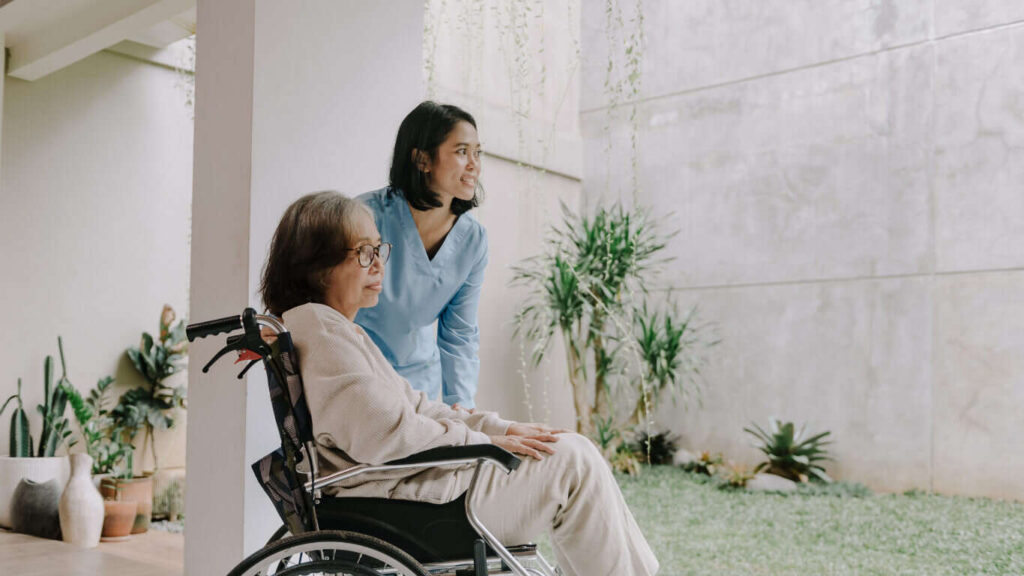How to Develop a Comprehensive Lymphedema Care Plan: Effective Lymphedema Management Strategies
Living with lymphedema can be challenging, but creating a comprehensive care plan can significantly improve your quality of life. In this guide, I’ll walk you through everything you need to know about lymphedema management—from understanding its causes to developing an effective treatment plan and daily strategies for success. Whether you’re dealing with primary or secondary lymphedema, this guide is packed with actionable advice to help you or a loved one manage this condition.
Key Takeaways
- Lymphedema is a chronic condition that requires tailored management strategies.
- A comprehensive care plan includes assessment, therapy, and lifestyle adjustments.
- Treatments like compression garments, complete decongestive therapy, and surgical options can be effective.
- Working with a certified lymphedema therapist is crucial for long-term success.
- Daily skincare and self-care routines help reduce swelling and prevent complications.
What is Lymphedema and How Does It Occur?
Understanding the Causes of Lymphedema
Lymphedema is a condition that causes swelling due to a buildup of lymph fluid in the body’s tissues. This occurs when the lymphatic system is damaged or blocked, preventing proper drainage. There are two main types: primary lymphedema, which is hereditary, and secondary lymphedema, which results from an external factor like surgery or cancer treatment.
In primary lymphedema, issues with lymphatic vessels or lymph nodes can appear from birth or develop later in life. Secondary lymphedema, on the other hand, often occurs after procedures like axillary lymph node dissection or radiation therapy for breast cancer. Infections or severe injuries can also trigger it.
Symptoms of Lymphedema: What to Look For
Recognizing the symptoms of lymphedema early is vital. These may include:
- Swelling in one or more limbs, which might feel heavy or tight.
- Discomfort or restricted movement in the affected area.
- Skin changes, such as thickening, redness, or hardening.
- Recurrent infections or wounds that heal slowly.
If you notice these signs, consult a healthcare provider to diagnose lymphedema and start treatment.
How Lymphedema Occurs in Patients
Lymphedema occurs when the delicate balance of fluid drainage is disrupted. Normally, the lymphatic system transports lymph fluid—which contains white blood cells and waste—throughout the body. When this system is impaired, the fluid accumulates in tissues, leading to swelling.
Lymphedema among cancer survivors is particularly common because treatments like surgery or radiation can damage lymphatic structures. For instance, breast cancer-related lymphedema is a frequent complication following mastectomy or lymph node removal.
What Are the Treatment Options for Lymphedema?
Overview of Lymphedema Treatment Methods
While there’s no cure for lymphedema, several effective ways exist to treat lymphedema and manage symptoms. Treatment options may include:
- Compression therapy: Using compression garments or bandages to control swelling.
- Complete decongestive therapy (CDT): A gold-standard approach combining manual lymphatic drainage, compression, skincare, and exercise.
- Surgical treatment: Procedures like lymph node transfer or lymphovenous bypass for severe cases.
Complete Decongestive Therapy: A Key Approach
Complete decongestive therapy (CDT) is a cornerstone of lymphedema treatment. It includes:
- Manual lymphatic drainage (MLD): A specialized massage technique to stimulate fluid movement.
- Compression therapy: Using bandages or garments to prevent fluid buildup.
- Exercise: Targeted movements to enhance lymphatic flow.
- Skincare: Preventing infections and maintaining healthy skin.
A certified lymphedema therapist often supervises CDT to ensure the best outcomes. According to Johns Hopkins Medicine, CDT effectively reduces swelling and improves function in affected areas.
Role of Compression Garments in Lymphedema Management
Compression garments play a crucial role in managing lymphedema. These specially designed sleeves, stockings, or gloves apply gentle pressure to the affected limb, encouraging lymph flow and preventing fluid accumulation.
Choosing the right garment requires guidance from a lymphedema specialist. Factors like fit, pressure level, and material must meet your needs. Wearing these garments consistently can reduce swelling and help you maintain mobility.
How to Create an Effective Lymphedema Care Plan?
Initial Assessment for Lymphedema: What to Expect
Starting a lymphedema treatment plan begins with a thorough assessment of lymphedema by a healthcare provider. This involves:
- Reviewing your medical history to identify risk factors.
- Conducting a physical exam to evaluate the extent of swelling and other symptoms.
- Diagnostic tools like imaging or bioimpedance spectroscopy are used to assess fluid levels.
An accurate diagnosis and treatment plan ensures that all aspects of care are addressed effectively.
Working with a Lymphedema Specialist
Collaborating with a certified lymphedema therapist is essential for crafting a comprehensive treatment plan. These professionals specialize in therapies like manual lymphatic drainage and compression therapy, tailoring interventions to your unique needs. Regular follow-ups with your care team help refine your plan over time.
Incorporating Occupational Therapy into Your Plan
Occupational therapy can be a valuable addition to your lymphedema program. Therapists focus on teaching daily living skills and adaptive techniques to manage the condition. This includes:
- Recommending assistive devices to support mobility.
- Developing personalized exercise routines to maintain lymphatic health.
- Addressing the psychosocial impact of lymphedema, helping you cope with challenges like body image concerns or lifestyle changes.
What Is the Role of Surgical Treatment in Lymphedema Care?
Understanding Lymphedema Surgery Options
For patients with advanced lymphedema, surgical treatment may offer relief. Common procedures include:
- Lymph node transfer: Transplanting healthy lymph nodes to affected areas.
- Lymphovenous bypass: Connecting lymphatic vessels to nearby veins to redirect fluid.
- Liposuction: Removing excess fat and tissue caused by long-term swelling.
These surgeries are typically recommended for cases where other treatments have proven insufficient.
Lymph Node Transfer: When Is It Necessary?
A lymph node transfer involves moving functional lymph nodes from one part of the body to another to restore lymphatic flow. This procedure can be beneficial for those with severe secondary lymphedema who have not responded to non-surgical interventions.
Lymphovenous Bypass: Benefits and Considerations
In a lymphovenous bypass, surgeons create small connections between lymphatic vessels and veins. This innovative procedure can reduce swelling and improve overall comfort. It’s minimally invasive and offers quicker recovery times than other surgical options.
How Can Patients with Lymphedema Manage Their Condition Daily?
Daily Skin Care Regimens for Lymphedema Patients
Proper skin care is a cornerstone of lymphedema management. Patients should:
- Keep the skin clean and moisturized to prevent infections.
- Avoid cuts, burns, or insect bites, which can exacerbate swelling.
- Use mild soaps and lotions designed for sensitive skin.
Tips for Reducing Swelling and Improving Comfort
To reduce swelling, consider:
- Elevating the affected limb whenever possible.
- Engaging in light exercise to encourage fluid movement.
- Wear your prescribed compression garments consistently.
These small daily habits can greatly affect your comfort and mobility.
Living with Lymphedema: Strategies for Success
Living with lymphedema requires adaptability and a proactive mindset. Join support groups to connect with others who share your experiences. Work closely with your care team to update your treatment plan as needed.
How Does Breast Cancer Influence Lymphedema Development?
Breast Cancer-Related Lymphedema: What Patients Should Know
Patients recovering from breast cancer treatment face a higher risk of developing breast cancer-related lymphedema. This condition often affects the arm on the side of the body where lymph nodes were removed or damaged during treatment.
Impact of Cancer Treatment on the Lymphatic System
Cancer care, including surgery and radiation, can compromise the lymphatic system, leading to swelling and reduced fluid drainage. Early intervention is key to managing these effects.
Managing Secondary Lymphedema in Breast Cancer Survivors
For survivors of comprehensive cancer treatments, a combination of therapies like complete decongestive therapy and regular follow-ups with lymphedema therapists can help maintain function and quality of life.
FAQs
What are the common causes of swelling in lymphedema?
Lymphedema causes swelling due to impaired lymphatic function, often from surgery, radiation, or infection.
How can I prevent lymphedema after surgery?
Exercise gently, wear compression garments, and maintain good skin care practices to reduce the risk of developing lymphedema.
Are there options for advanced lymphedema?
Yes. Procedures like lymph node transfer and lymphovenous bypass are available for advanced cases.





